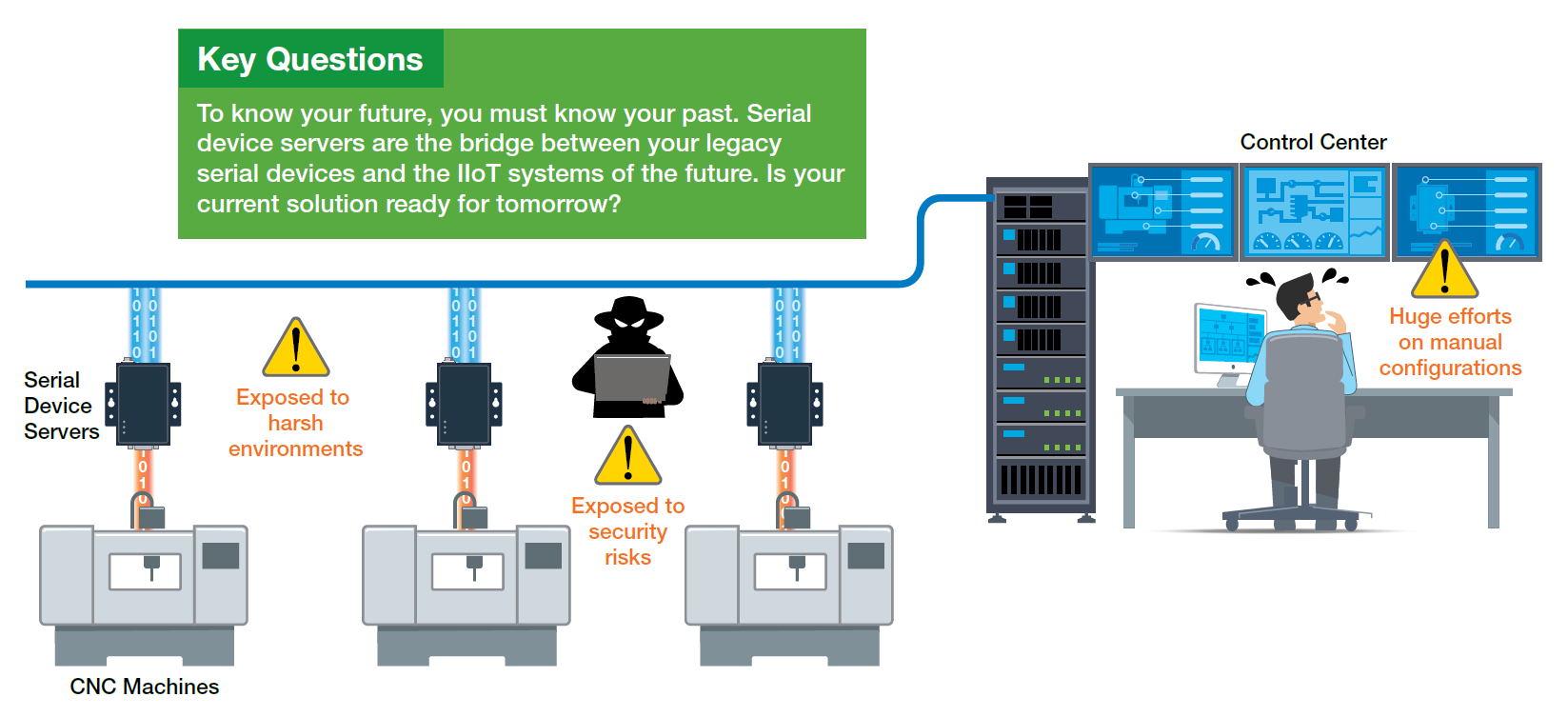If you need to connect proprietary serial devices over IP networks, serial device servers can provide a simple bridge between your legacy serial devices and modern communication systems. However, without sufficient knowledge of how serial device servers work, you could end up spending unnecessary time and effort. Here are three key criteria you should remember when choosing a serial device server. If your legacy serial devices speak in standard fieldbus protocols, such as Modbus and PROFIBUS, read Moxa’s article to learn how to choose the right protocol gateway to enable IP communications.
Enabling dozens of serial device servers could also take a great deal of time and effort to manually configure countless settings. However, compared to completely replacing all your hardworking legacy devices, learning how to use and deploy serial device servers can be a breeze. Whether you are configuring IP addresses for each of your serial device servers, setting up virtual serial (COM) ports, or updating serial and Ethernet parameters, serial device server configurations can be painful if you don’t have clear instructions or a smart utility to help walk you through all the steps. The frustration can even extend into the operations phase when you need to manage or maintain dozens of devices.
When choosing a serial device server, check if there is an easy-to-use web console or utility to simplify configuration and management. Don’t overlook this feature because there will only be more field devices that need to be connected as your network matures. Repeating configuration processes increases the burden of device management and can really wear you down.

People can access your application through countless entry points, including your serial device servers. Be sure the serial device server you choose has sufficient security functions to keep your data protected. Using strong login passwords or creating a whitelist are the simplest ways to limit access to your serial device servers to authorized personnel. Closing unused ports on serial device servers can also be an efficient way to block unnecessary entrances that could be exploited. During data transmissions, using a secure protocol, such as HTTPS, can also minimize unwanted access to your field data.
If you’re still using commercial-grade serial device servers for your industrial applications, you should reconsider. Commercial serial device servers may seem adequate if you only need to connect a few field devices, but not for IIoT projects that require connecting a large number of field devices and transmitting critical field data on time. You’ll want to choose a serial device server that is capable of enduring harsh environments, such as extreme temperatures or high electromagnetic interference, can minimize the chances of data loss arising from a serial device server shutdown.
Using the above three criteria to evaluate your serial device server options can help you find the right solution for your industrial applications. Moxa’s NPort serial device servers are developed with easy-to-use, secure, and reliable features that are ideal for connecting field devices in IIoT applications.

Be the first to learn about classes, training, webinars, products news and more.
©2025 MSI TEC, Inc ALL RIGHTS RESERVED
©2025 MSI TEC, Inc ALL RIGHTS RESERVED
We use only necessary cookies on this website to provide the best user experience and customer service.